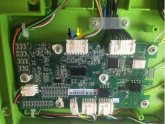I’ve had my laptop connected about a month now nonstop and two of my batteries won’t balance. They both have one cell bank that won’t go above 3.3v. I’m guessing this is why the batteries were retired. Has anyone else experienced this?
Yes, I acquired two U27-12XPs off eBay. Same thing, one module had only 69 charge cycles and goes to 14.9 volts and the other to only about 13.6volts. On the one that only goes to 13.6volts it has about 560 charge cycles and one of the packs in the module never seems to get over 3.3volts. I have these wired in Series, so they are really unbalanced during the absorption charge cycle, one at 14.5 and other at 13.6. When the charger goes into float they both settle down to about .2volts of each other.




